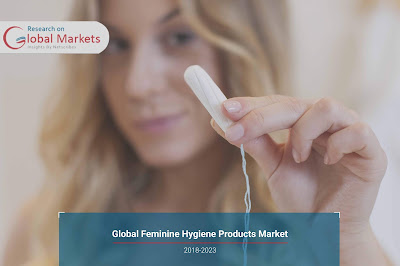Increased awareness of women’s health and hygiene have brought forward eco-friendly feminine hygiene products. The demand for greener products is driving toiletry manufacturers to invest in cleaner, healthier alternatives. Overall, the Global Feminine Hygiene Products Market comprises of sanitary pads, tampons, menstrual cups, and vaginal health products.
Why are women switching to reusable options?
Health Benefits
Disposable pads, tampons are known to have toxic chemicals created during manufacturing, with the use of bleach to sanitize the finished goods for the end-users. This is a standard step in the manufacturing process, but it leaves behind by-products, which if exposed to for a long period of time, can be harmful. Some of those by-products come from pesticides used to grow the cotton, the same cotton placed inside the pads.
Consumers have switched to absorbent gel bases to avoid those, but exposure to these chemical bases are just as unhealthy. A common outcome of using tampons is Toxic Shock Syndrome, a serious condition that results from the plastics that go into making one, and that’s directly exposed to the user's skin. The risks vary and are usually very low, but is serious enough to make consumers want something else from the Global Feminine Hygiene Products Market.
Why are women switching to reusable options?
Health Benefits
Disposable pads, tampons are known to have toxic chemicals created during manufacturing, with the use of bleach to sanitize the finished goods for the end-users. This is a standard step in the manufacturing process, but it leaves behind by-products, which if exposed to for a long period of time, can be harmful. Some of those by-products come from pesticides used to grow the cotton, the same cotton placed inside the pads.
Consumers have switched to absorbent gel bases to avoid those, but exposure to these chemical bases are just as unhealthy. A common outcome of using tampons is Toxic Shock Syndrome, a serious condition that results from the plastics that go into making one, and that’s directly exposed to the user's skin. The risks vary and are usually very low, but is serious enough to make consumers want something else from the Global Feminine Hygiene Products Market.
The Green Wave
Hundreds of feminine hygiene products are used in a person’s lifetime. Next, add the amount of energy required for processing raw materials, manufacturing, and shipping. It’s a lot if multiply this by a billion times! Next, the waste is disposed of in landfills and doesn’t decompose.
Compare this outcome with that of a menstrual cup that can last over 5 years if maintained well. It replaces thousands of disposable items used in a lifetime. Some users prefer using cloth menstrual pads, made using natural fibers which are biodegradable over the pads and tampons made from plastic.
Reduced Expenditure
Feminine hygiene products are costly. On average, users purchase a bag or box of these items every month, some even more than that – either way, there’s a price tag involved. Prices increase according to specific requirements, even if the Feminine Hygiene Products Market Size does comprise of differently priced items.
Hundreds of feminine hygiene products are used in a person’s lifetime. Next, add the amount of energy required for processing raw materials, manufacturing, and shipping. It’s a lot if multiply this by a billion times! Next, the waste is disposed of in landfills and doesn’t decompose.
Compare this outcome with that of a menstrual cup that can last over 5 years if maintained well. It replaces thousands of disposable items used in a lifetime. Some users prefer using cloth menstrual pads, made using natural fibers which are biodegradable over the pads and tampons made from plastic.
Reduced Expenditure
Feminine hygiene products are costly. On average, users purchase a bag or box of these items every month, some even more than that – either way, there’s a price tag involved. Prices increase according to specific requirements, even if the Feminine Hygiene Products Market Size does comprise of differently priced items.
Reusable options like menstrual cups do have a price tag, but it’s a one-time investment. Consumers save only a few months, which is a lot compared to disposable items.
This awareness of how regular sanitary pads are made, their impact on the environment and users' health combined with a preference for alternative sanitary products, and has created this demand for reusable, and safer products, expanding the Feminine Hygiene Products Market Size even more. The market is forecasted to expand at a CAGR of 6.8% and will reach a value of USD 52 Bn by 2023, from USD 37.4 Bn in 2018.
This awareness of how regular sanitary pads are made, their impact on the environment and users' health combined with a preference for alternative sanitary products, and has created this demand for reusable, and safer products, expanding the Feminine Hygiene Products Market Size even more. The market is forecasted to expand at a CAGR of 6.8% and will reach a value of USD 52 Bn by 2023, from USD 37.4 Bn in 2018.



No comments:
Post a Comment